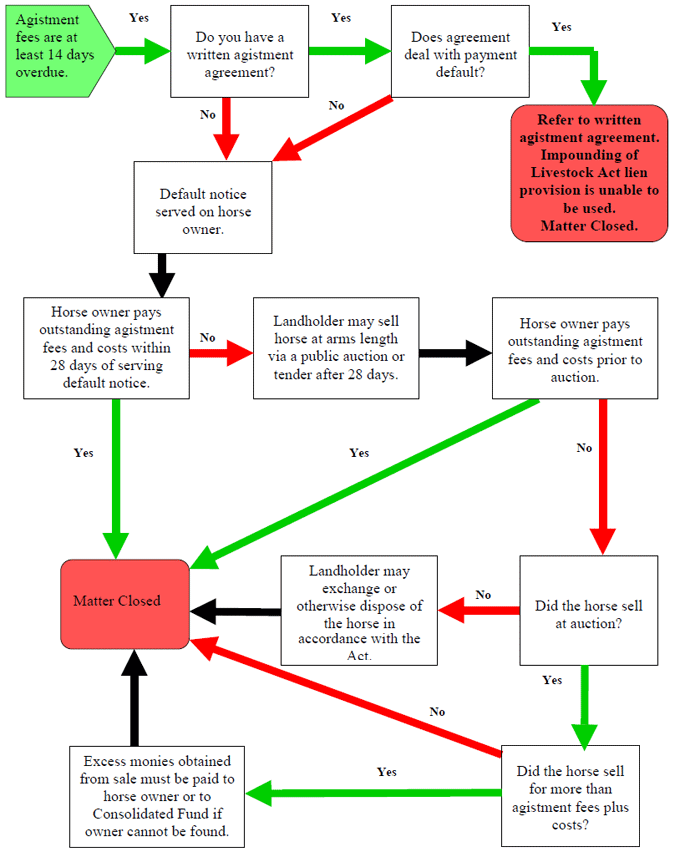Step-by-step ILA lien guide
Step 1
Make sure there is no current written agistment agreement that deals with unpaid fees.
Step 2
At least 14 days of overdue agistment fees must be owing before you proceed. (Note: you can not claim for more than 3 months of overdue fees).
Step 3
Complete a Default Notice (see Sample Default Notice in the agistment kit) and serve it on the horse owner. (Make sure you keep a copy for yourself). The Notice can be served on the owner by sending it via registered mail if you know their postal address or in person if you don't know their postal address.
If a postal or residential address is not known and the Notice cannot be served in person, you can publish a Notice in the public notices section of a daily Victorian newspaper. (See Sample Newspaper Notice in the horse agistment kit).
Once the Default Notice is served you legally hold a lien over the horse which entitles you to have possession of the horse until:
- the horse owner pays you the money they owe you;
- you come to an agreement about payment, or;
- you sell or dispose of the horse in accordance with the Act.
Step 4
You must wait for at least 28 days after serving the Default Notice before taking further action.
If, during this time, the horse owner pays you:
- the amount specified in the Default Notice;
- any additional costs for the care of the horse up until the date they pay you; and
- any costs for the planned disposal of the horse (by sale, exchange, disposal or destruction),
the lien is extinguished and the horse owner is entitled to recover possession of the horse.
Alternatively, the horse owner is entitled to recover possession of the horse if you come to an agreement with the horse owner about payment and sign a notice withdrawing the Default Notice.
Step 5
If the horse owner has not paid the money owing within 28 days of serving the Default Notice or Newspaper Notice, and you have not withdrawn the Notice, you may attempt to sell the horse at a public auction or by public tender, at arms length, to recover your costs.
All records of the sale must be kept for 2 years.
You may keep proceeds of the sale to recover your costs (as outlined in Step 4). Any remaining proceeds from the sale must be paid to the horse owner, or if the owner can not be found, to the Consolidated Fund. Details on how to pay proceeds to the Consolidated Fund can be obtained by contacting us.
If the proceeds of the sale of the horse are less than the amount you are owed, you may seek the remaining amount through civil action.
Note The horse may be exchanged, otherwise disposed of or destroyed without first offering it for sale, if you obtain a certificate from a registered veterinary practitioner stating that the horse is unsuitable for sale.
Additional note
If the horse did not sell when offered for sale through the earlier steps, you may exchange or otherwise dispose of it at arms length, or destroy it.
The Horse Agistment Lien Process

Note: Refer to Impounding of Livestock Act 1994 for application of the legislation.
For more information about using the Impounding of Livestock Act 1994 horse agistment lien provisions:
- call our Customer Service Centre on 136 186
- email: animal.welfare@ecodev.vic.gov.au